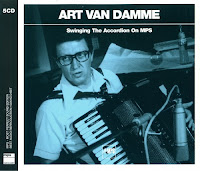The Hot Record Society, a New York-based group of jazz recording
enthusiasts organized in 1937 by Stephen W. Smith, quickly evolved from a
clearinghouse and auction outlet for collectors into a real recording
organization. Across ten years from 1937 through 1947, HRS recorded such
outfits as Pee Wee Russell's Rhythmakers (an ad hoc group formed by
members of Count Basie's and Eddie Condon's bands), Sidney Bechet and
Muggsy Spanier, Rex Stewart's Big Seven, Brick Fleagle's Orchestra,
Sandy Williams' Big Eight, Jimmy Jones, J.C. Higginbotham, Joe Thomas,
Harry Carney, Buck Clayton, Trummy Young, the Billy Taylor Quartet,
Russell Procope, Dicky Wells, Babe Mathews and Joe Thomas, and Billy
Kyle. It's all here, 124 tracks encompassing everything from prewar New
Orleans jazz to the early bop period of the mid-'40s, and while there
are gaps -- Smith went for years without recording after the outbreak of
the Second World War, owing to a government priority for shellac (the
substance that 78s were made from) that barely kept the major labels in
business -- it's a good account of what happened with jazz over the
decade represented here. Some of the selected material is a little odd,
owing to choices made based on copyright accessibility (or
nonexistence), and there are perhaps too many alternate takes for the
novice listener. On the other hand, the sources are excellent, the
recording venue was very fine, and the Mosaic people have done their
usual excellent remastering job, so that, say, Budd Johnson's tenor sax
and Jimmy Jones' piano on "Sunny Side Up" and "Strollin' Easy" sound
incredibly clean and close, and Freddie Green's guitar gets one of its
better showcases of the era. And the Brick Fleagle sides, starting with
the extraordinary "Brick's Boogie," are almost worth the price of
admission by themselves, just to hear what this overlooked, prodigiously
talented musician had to offer in his prime, 60 years earlier.














